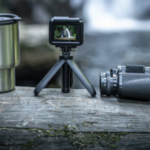Hey there, birdwatching enthusiasts! Whether you’re a seasoned birder or just getting started, having the right pair of binoculars can make all the difference in your birdwatching experience. In this guide, we’ll explore what makes birdwatching binoculars unique, the key features, and the benefits they offer, to help you find the best binoculars for your birdwatching adventures.
What Are Birdwatching Binoculars?
Birdwatching binoculars are specially designed to help you get a close-up view of birds in their natural habitat. They offer a combination of magnification and lens quality that allows you to see fine details, even from a distance. They typically have features that enhance clarity, color accuracy, and ease of use, making them ideal for spotting and identifying birds. While general-use binoculars can be used for birdwatching, they are not optimized for this specific activity.
Common Birdwatching Scenarios
Birdwatching binoculars are perfect for:
- Birdwatching in forests and woodlands: Spot birds in trees and bushes.
- Wetland and shorebird watching: Observe birds in open spaces like marshes and beaches.
- Backyard birdwatching: Enjoy birdwatching from the comfort of your home.

Key Features to Look for in Birdwatching Binoculars
Magnification and Objective Lens Diameter
When looking for binoculars whether you’re searching in a retail store or on the web, you will encounter numbers. An example is: 8×42. This means that that magnification of the binoculars is 8x and the objective lens is 42mm in diameter.
Common Magnification Levels: There is a natural tendency to go for more powerful binoculars, however at these high mags you can get image shake. This is where small movements translate onto your image. The most popular magnifications for birdwatching binoculars are 8x and 10x. These provide a good balance between zooming in on the birds and keeping the image stable.
Objective Lens Diameter: A larger objective lens allows more light to enter, giving you brighter and clearer images, especially in low light conditions. However, thee bigger the objective lens the heavier and less portable the pair of binoculars. For birdwatching, most tend to get between 40-44mm objectives to get moderate low-light capability and portability. Any smaller and you would only be able to get clear bird images on bright sunny days. In addition, larger objective diameters increase the exit pupil where your eyes focus, giving you a more comfortable viewing experience.
Optical Quality
Lens Coatings: Look for binoculars with fully multi-coated lenses. These coatings enhance light transmission, reduce glare, and improve image clarity.
Prism Types: Roof prisms are common in birdwatching binoculars due to their streamlined and compact design and durability. Some models use Porro prisms, which can offer better depth perception and a wider field of view. The BAK4 prism provides a more circular field of view and is considered superior to the BK7 prism.
Field of View
A wide field of view is crucial for birdwatching, as it allows you to track moving birds more easily. Look for binoculars with a field of view of at least 300 feet at 1000 yards.
Durability and Build Quality
Waterproof and Fog-proof Features: Birdwatching often takes you into various weather conditions, so waterproof and fog-proof binoculars are essential.
Rubber Armor and Ergonomic Design: A rubberized exterior provides better grip and shock resistance, while an ergonomic design ensures comfort during extended use.
Eye Relief and Comfort
Eye relief is the distance from the eyepiece lens to your eye that allows you to see the full field of view. Longer eye relief is more comfortable, especially for those who wear glasses
Importance for Eyeglass Wearers: If you wear glasses, you’ll want binoculars with sufficient eye relief (usually 15mm or more) so you can see the full field of view comfortably.
Adjustable Eyecups: Twist-up or fold-down eyecups allow you to adjust the distance between your eyes and the binocular lenses for optimal viewing.
Close Focus Distance
A short close focus distance (usually under 10 feet) is great for observing birds up close, such as those at feeders or in nearby bushes.

How to Choose the Best Birdwatching Binoculars
Choosing the right birdwatching binoculars can be overwhelming with so many options available. Consider factors such as your primary birdwatching locations, the type of birds you observe, and your budget. Researching and comparing different models will help you make an informed decision.
Top Brands
Several brands are known for their high-quality birdwatching binoculars, including Nikon, Vortex, and Zeiss. Each brand offers a range of models catering to different needs and budgets, so explore their offerings to find the perfect match for you.
Specific Environments
Depending on where you do most of your birdwatching, you might need binoculars with specific features. For example, birdwatching in forests might require binoculars with a wide field of view, while wetland birdwatching might benefit from waterproof models.
Different Budgets
Birdwatching binoculars are available in a wide range of prices. Affordable options under $200 can still offer good quality for beginners, while high-end models provide exceptional clarity and durability for serious birders.
Special Features
Some birdwatching binoculars come with special features like image stabilization, lightweight design for travel, or built-in compasses. These features can enhance your birdwatching experience, depending on your specific needs.
Click here to check out our guide on the best birdwatching binoculars in 2024!
Conclusion
There you have it! Birdwatching binoculars are a must-have for anyone serious about birdwatching. They offer the perfect combination of magnification, clarity, and ease of use, making your birdwatching adventures more enjoyable and rewarding. Whether you’re out in the wild or watching birds from your backyard, a good pair of birdwatching binoculars can make all the difference. So, why not invest in a pair and take your birdwatching to the next level? Happy birding!


